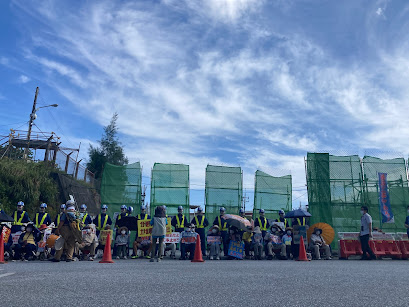39 Civil Society Groups ask the UNESCO World Heritage Committee to Address the Issues of U.S. Military Training Area in its World Heritage Inscription of the Yambaru Forest
Press Release
The group asks the UNESCO WH Committee to follow the IUCN World Heritage Programme's recommendation to inscribe the NPOI as a World Natural Heritage site at the meeting. The group urges, however, that the Committee "include [in its inscription document] effective language to address the issues of the U.S. Military's Northern Training Area (NTA) located next to the NPOI and the "returned land" of the former NTA now incorporated into the nominated site."
The letter describes the issues of the boundary between the U.S. military's NTA and the WH nominated site, the impacts of the military training on the nominated site, and discarded military materials left in the "returned land."
Satoru Yoshihama, a co-founder of the Shimagurumi Kaigi Ogimi and a member of the Ogimi Village Assembly, said, "the U.S. military's aircraft flight training is impacting the daily life of Ogimi villagers. Our schools and residential areas are all impacted. The mountain area of our small village is part of the nominated site. I am worried about impacts of the training on the animal species in the nominate site."
Akino Miyagi, an entomologist who has researched the Yambaru forest (or NPOI), argued, "not only is there a large amount of discarded military materials such as bullet shells left unattended in the "returned land" in the nominated site, but also the Japanese government has tried to hide this information in the nomination process. These issues need to be addressed."
Hideki Yoshikawa, Director of the Okinawa Environmental Justice Project, insisted, "the Yambaru forest (Northern Part of Okinawa Island) is a natural wonder we Okinawans are proud of, and it deserves to be a World Heritage site. However, the issues of the NTA and the "returned land" are as serious as those of over-tourism and invasive alien species. The UNESCO WH Committee needs to address them in its inscription process."
Okinawa is the southernmost prefecture of Japan. While only 0.6 percent of Japan's entire landmass, Okinawa bears 70 percent of U.S. military bases and training areas in Japan. This concentration of U.S. bases and training areas has complicated the island prefecture's environmental protection.



